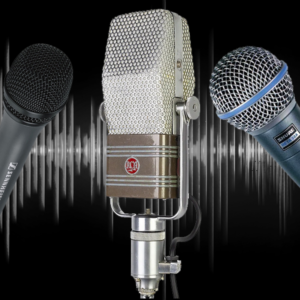Surround System with smart setup
The basic outline of my reviews are typically zero to five stars. And I simply don’t give 5 stars. That would indicate something is “the best” out there. The best is subjective as well as that target can move. However, the Theory Audio Design soundbar very well could make me change my mind.
Theory Audio Design (Theory) is the brainchild of Paul Hales, founder of Pro Audio Technology. The idea behind Theory was to make the high-end technology of PRO (which is typically installed in very high-end residential/private cinemas) accessible to a “wider audience” (i.e. for media rooms, bedrooms, backyards, distributed audio systems, and high-end commercial spaces).
The Albright home audio system is a basic head unit from Sony. We don’t have surround sound, ATMOS, or anything special. We will watch streaming more often than not, and live sports occasionally. For this review, though, I went the route of Billie Eilish’s Happier Than Ever.
This past summer I had the chance to visit Paul and the team at Pro Audio Technology and Theory Audio Design in southern California. The demo rooms there are among some of the best audio I’ve experienced. When the opportunity to experience this in my own home theater came up, I took them up on it quickly.
Now, understand this is not your typical home theater and surround sound system. The Theory home theater system centers around a soundbar and the loudspeaker controller. But, man, does it sing.
The PRO brand is not designed to be aesthetically pleasing; it’s designed to reproduce genuinely professional-grade sound. Often, PRO speakers are installed behind acoustic fabric. Theory loudspeakers, on the other hand, are meant to be seen, and feature premium aluminum construction finishes.
With that said, the speakers are built like tanks and about as heavy, but they definitely don’t look like pro equipment (which isn’t necessarily a bad thing). They are sleek and discreet – not some high-tech looking speaker array;
Get yourself some help to install your Theory system. In fact, hire some young people to do it for you. These suckers are HEAVY.
Theory Audio Design sb75 Soundbar
The sb75 soundbar is designed to fit perfectly under at 75” TV and they offer table top stands or a wall mount option. It utilizes six 5” carbon fiber low frequency drivers and three 1.4” polymer compression driver tweeters. Theory says the power is 200W per channel (AES method), with a 4-ohm impedance. The soundbar’s rated frequency bandwidth is 58 Hz to 23 kHz with a maximum output of 117 dB per channel. The sensitivity rating is 94 dB.
I told you they were heavy. The sb75 soundbar is 68 pounds with a couple of mounting options including on-wall. Dimensions are 9.5″ H x 66″ W x 3.8″ D. If you have a 65” or 85” TV, Theory offers two other soundbar models (sb65 and sb85) to fit those TV dimensions, respectively.
Theory Audio Design sb25 Multi-Use Speakers
The sb25 is essentially a single channel of the Theory soundbar, with the same specifications for the drivers and overall performance. You can mount it vertically or horizontally or even hang it from the ceiling with the optional Theory table top stands or universal mount adapters. It weighs 23 pounds and is 21.5″ H x 9.5″ W x 3.8″ D.
These don’t have to be used just as surrounds. A basic 2-channel, 2.1, or distributed audio sound system could be created with the sb25.
Theory Audio Design sub15 In-Room Subwoofer
As Ken Wilson used to say when calling St. Louis Blues games, “Oh Baby”. The sub15 is a 15” Theory driver featuring a 4” voice coil. The rated frequency bandwidth is 22 Hz to 125 Hz with 500W (AES) /1000 W (continuous) power handling.
Each sub15 passive subwoofer weighs 76 pounds and the cabinet measures 21.3” H x 23.5” W x 19.8” D. If the sub15 is too large for your space, there is also a smaller 12” subwoofer (sub12) available.
Setting up the sub15 was as easy as most other subwoofers of similar price. That’s not to say it’s easy. The ALC Automator software is intuitive and does walk you through the steps but knowing what you’re doing with audio systems generally will be helpful.
Controlling the audio – Theory Audio Design ALC-1809 Amplified Loudspeaker Controller
The center of the Theory Audio Design loudspeaker system is the ALC-1809 that ‘auto-magically’ sets the DSP of the Theory loudspeaker models that you have. Using Theory’s Automator software, the ALC sets audio levels, delays, EQ, and routing within the system. With 9 high power amplifier channels, 8 balanced audio inputs, and 32-bit/96kHz DSP processing the ALC-1809 gives you plenty of power.
In addition to the power, the ALC has 8×8 matrix bass-management, 8×8 matrix mixing, 160 parametric EQ’s (20 per channel), and internal band-limited and full band pink noise and sources, and up 75msec of delay per channel. It weighs 13lbs and fits into a single rack unit.
Plug and Play Surround Setup

Get yourself a PC (not a Mac) and tape measure. That’s all you need to run the Automator software and setup the system. You simply measure the distance from each speaker to the closest walls and the ideal listening position. Using the software you select the speaker layout, products, and the appropriate measurements, apply the settings, and away you go.
From the first note to the last the Theory Audio Design system hummed and thumped. This was an entirely different experience than what I heard in their offices. This was MY home, and MY TV. And did it ever sing. The sub15 subwoofers brought the depth you’d expect. The speakers and separation were clear and powerful. It was the closest my system has ever sounded to profession-grade.
It wasn’t just the lilting of Eilish’s voice, it was the reserved power behind the speakers. It’s as if you could tell they could get loud if they wanted, but they were holding something in reserve so as not to overwhelm you.
Your low end is the foundation of the system and sound; not just the rumble in your tummy. The sub15 is one of the best home theater subs I have ever heard. Better than anything from SVS, Sony, or others. It was clean, clear, and powerful.
Hales background is a combination of a hifi and pro audio. That’s his roots and his history. He’s been around the block once or twice when it comes to producing serious audio systems and components. That legacy comes through in the Theory Audio Design system.
After the credits rolled on Happier Than Ever I went through the gammet of genres. From Avengers to Ozark. Each one brought with it a nuance I’d not expected. As a final test I watched two separate NFL playoff games. This may have spoiled me for the rest of my life. The sound quality and impact of this sound was unmatched with anything I’d experienced to date.
The Bottom Line
The Theory Audio Design system is the best home theater audio I have heard to date. That’s not to say it’s the best in the world, it’s the best ever, or it’s the grandest of all time. But it is by far the best audio I have ever experienced in my home. It’s clear, pristine sound is powered by a beefy processor and amplifier in the background.
The only drawback is the price. The 5.2 system I received would run about $12,450 – but keep in mind that includes all of the amplification and DSP. For someone who enjoys being immersed in music, movies, and sports, and can afford that lift, I can say with confidence you should get a Theory system installed. For the rest of us, get a friend who has one and just go to their house to enjoy.
Rating: 4.5 out of 5 Stars
For more information: www.theoryaudiodesign.com
Theory Audio Design 5.2 System
Soundbar: 1 x sb75
Surround Loudspeakers: 2 x sb25
Subwoofers: 2 x sub15
Loudspeaker Controller: 1 x ALC-1809
Tim Albright is the founder of AVNation and is the driving force behind the AVNation network. He carries the InfoComm CTS, a B.S. from Greenville College and is pursuing an M.S. in Mass Communications from Southern Illinois University at Edwardsville. When not steering the AVNation ship, Tim has spent his career designing systems for churches both large and small, Fortune 500 companies, and education facilities.









